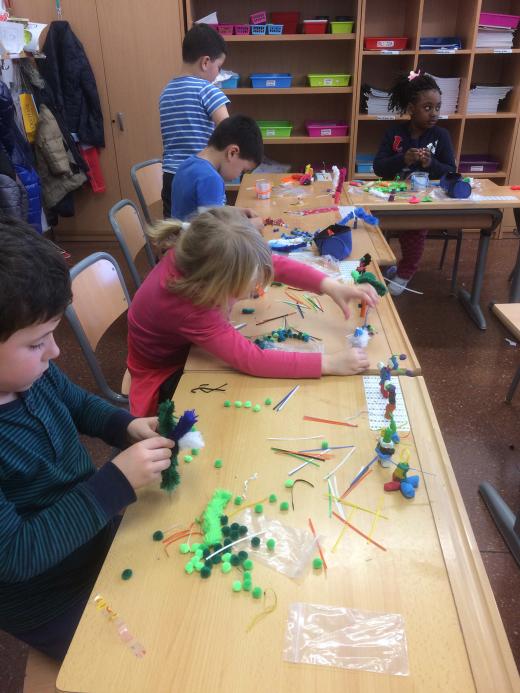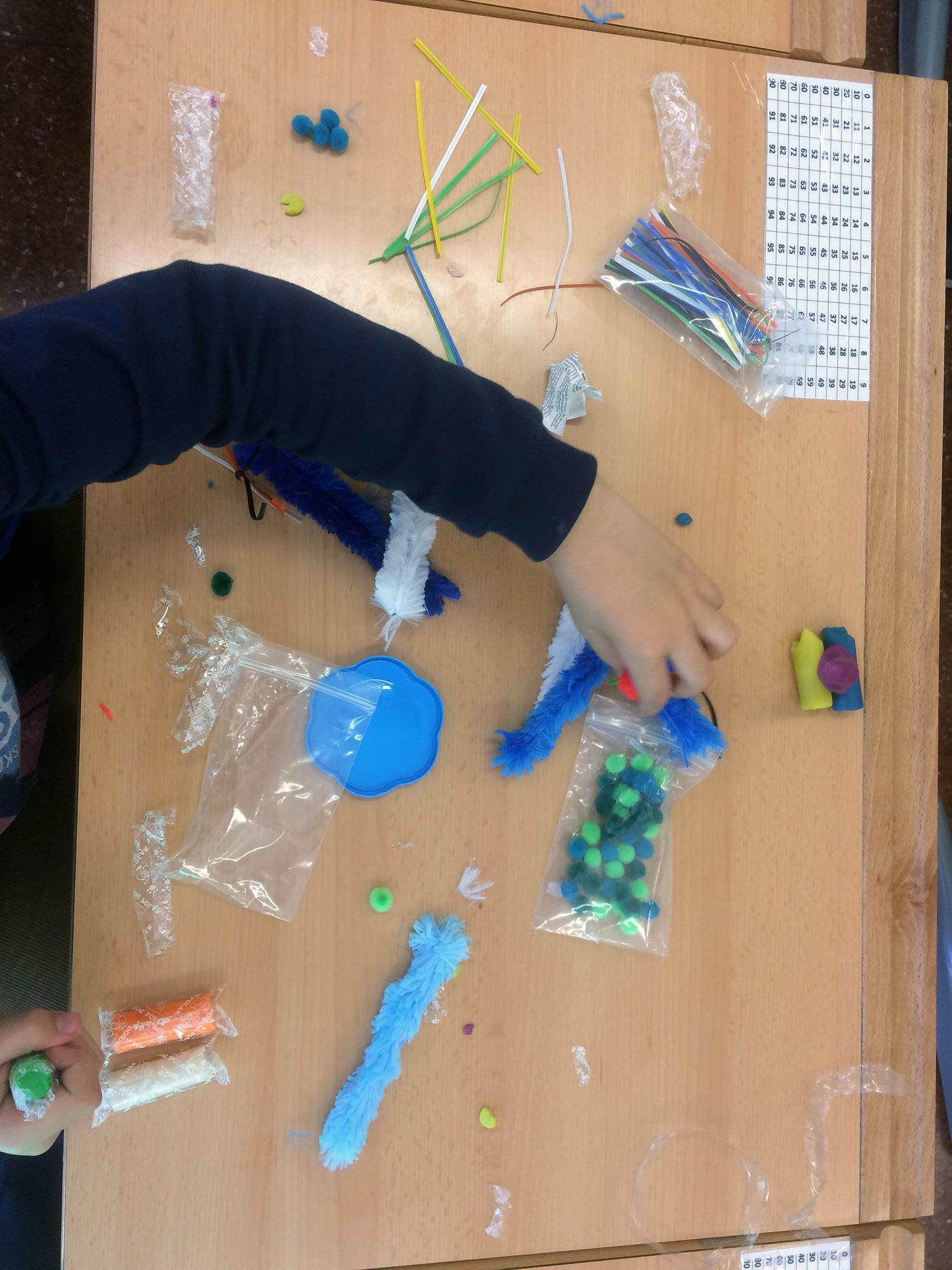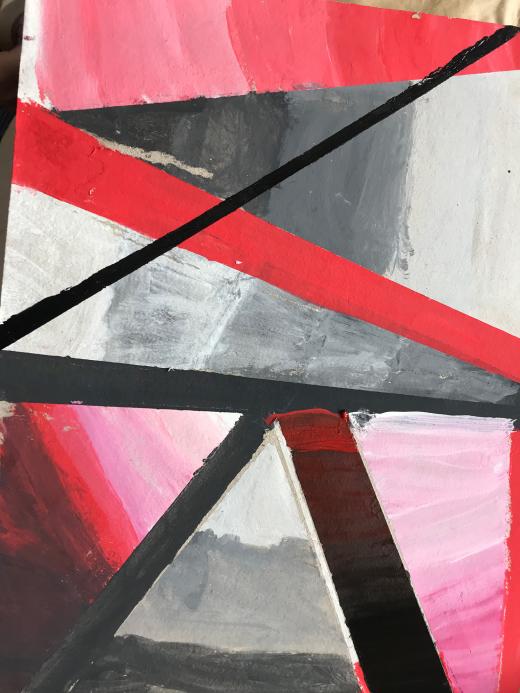URBAN CODES
20 4th-grade students at Aranbizkarra school, Vitoria-Gasteiz
Teacher: Iñaki Fernández
Artist: Jorge Rubio
We began the year analyzing the expressive potential of the shapes of letters in different alphabets, harmony, balance, and order, and experimented with them. The students looked for tags and letters in graffiti, in their surroundings. Street art is very suggestive to the students, as a way to intervene artistically in public spaces in order to surprise passers-by. Thus, they discover the importance of the creative process, considering that this type of intervention is fated to disappear. Urban art is ephemeral: in street art, the act and not the final object is what’s important, and it is subject to erosion, vandalism, etc.
The students invented different ways of “animating” inanimate objects in their environment, and were able to bring a playful, different perspective onto the objects and accidents that surround us in an urban context. They learned to take pictures, change the scale and point of view, make templates, but above all they learned to look at their surroundings in a different way.
Artist Jorge Rubio summarized the program as follows:
“This year, starting with the most basic creation (alphabets), we focused on communication, expression, understanding plurality and difference, and examined different tongues and languages. We looked at the many ways the same sign can be used, different magnitudes, intensities, intentions, wishes and desires, abilities, education… knowing that everything is valid, and anything can teach us something.”
“We also went out onto the street, making an effort to contribute different points of view, sharing our feelings and accepting an essential maxim of creation: the object is not the goal. Watching your work disappear is so inevitable that the final result shouldn’t be the motivation. I don’t know how long our interventions lasted, but by the following week they had disappeared. However, there weren’t any complaints; we were prepared, we already knew that once the work was made it wouldn’t last long. We photographed it, learned during the process, presented our work and we hope it was enjoyed by those who had the opportunity to see it.”
“Despite the contradiction of ‘making something that will disappear,’ I’m convinced that many of these little artists will look differently at what surrounds them, either with creative intentions or to discover what others show anonymously. It was a great year, and a great group. I hope they felt the same way too.”




